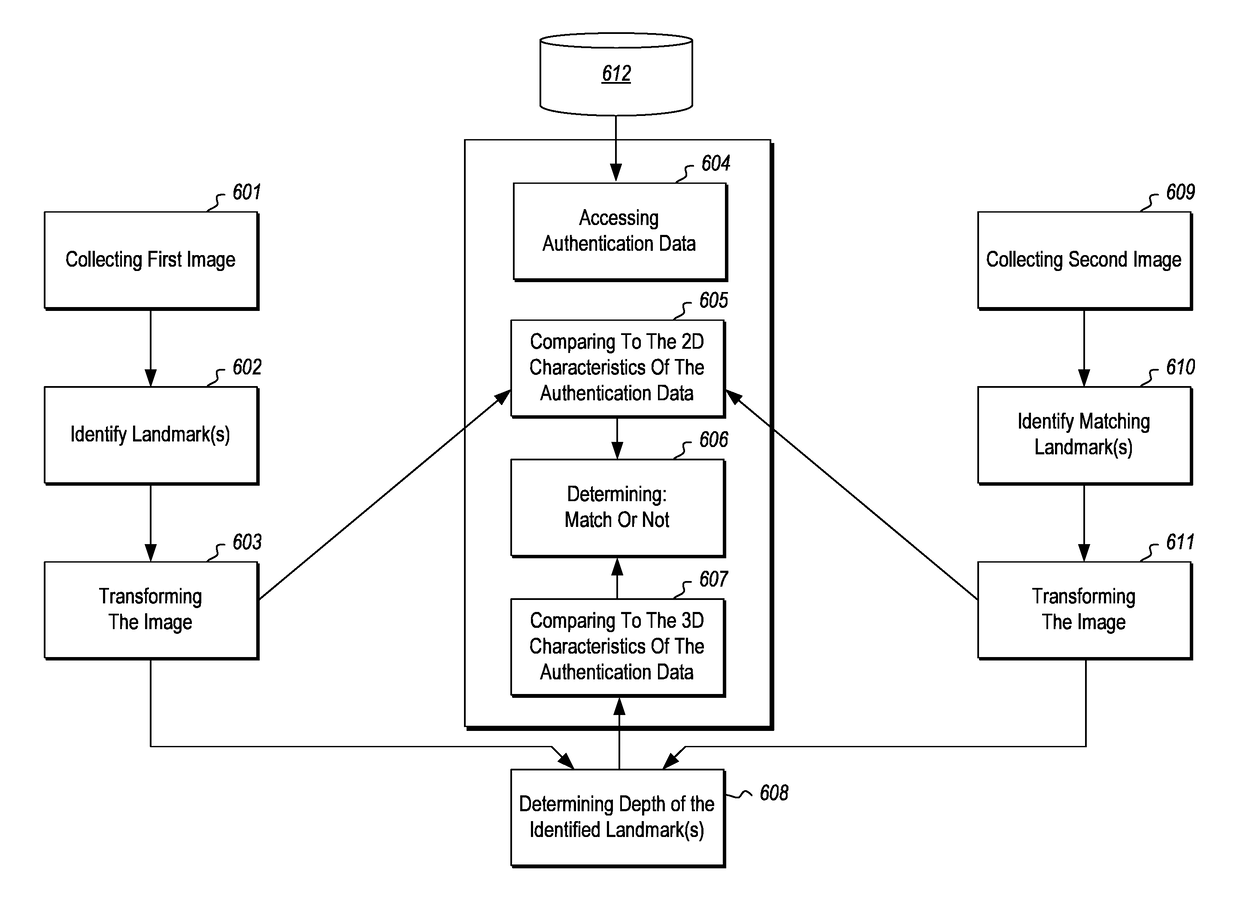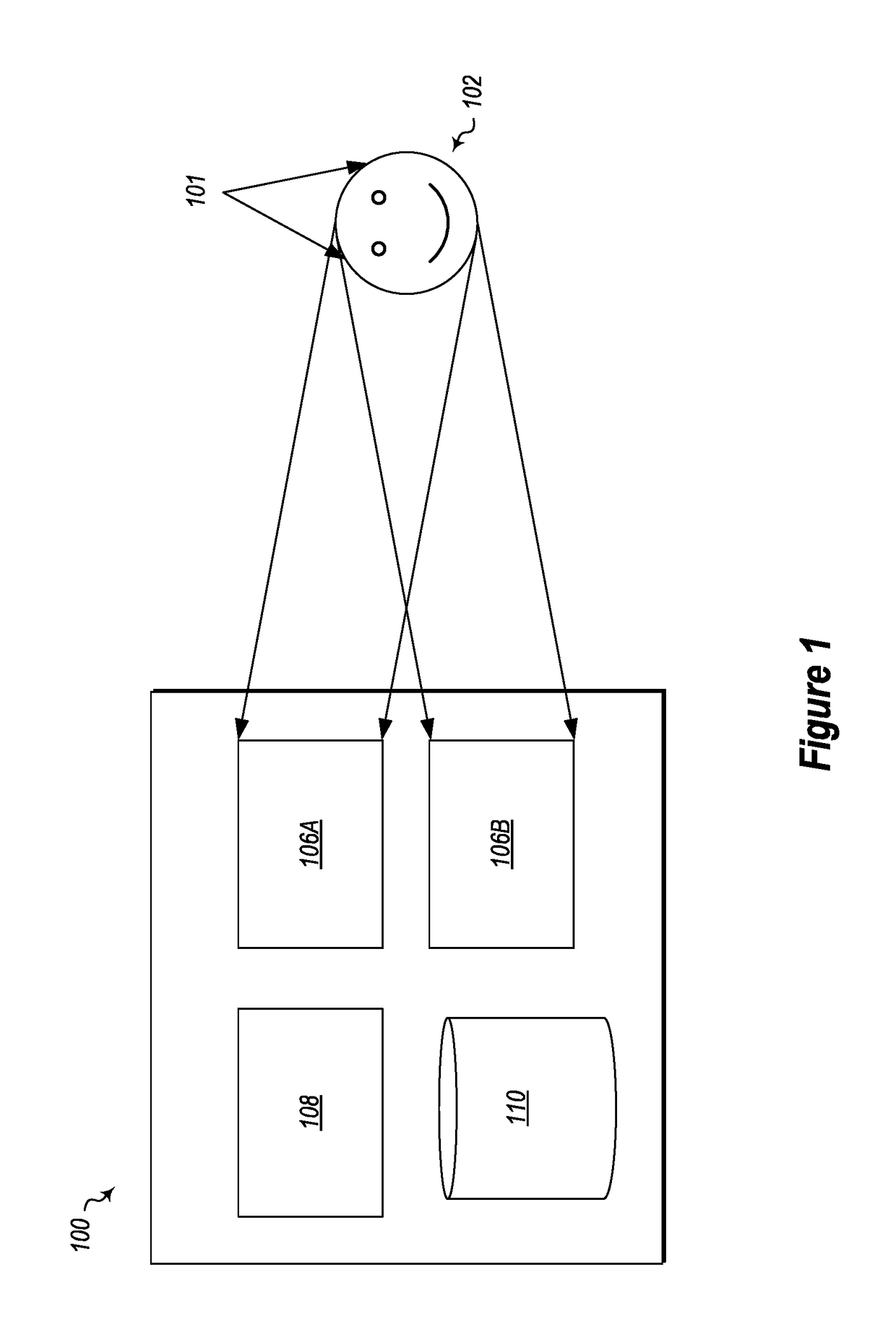3D imaging recognition by stereo matching of RGB and infrared images
- Summary
- Abstract
- Description
- Claims
- Application Information
AI Technical Summary
Benefits of technology
Problems solved by technology
Method used
Image
Examples
Embodiment Construction
[0025]This disclosure generally relates to devices, systems, and methods for three-dimensional (3D) imaging recognition and biometric authentication. More particularly, the present disclosure relates to a 3D imaging recognition system (optionally for biometric authentication) using substantially simultaneous collection of two wavelength image data by two imaging sensors placed apart. The present disclosure relates to filtering and / or collecting a reflected light from ambient light or artificial light source. The present disclosure also relates to applying stereo matching algorithms to the images collected from the two placed-apart imaging sensors to extract 3D information from the images.
[0026]In some disclosed embodiments, a system of a 3D image recognition system is configured with two imaging sensors placed apart, each of which is capable of detecting a different wavelength range of light from an object. For example, one imaging sensor may be capable of detecting visible light; t...
PUM
 Login to View More
Login to View More Abstract
Description
Claims
Application Information
 Login to View More
Login to View More - R&D
- Intellectual Property
- Life Sciences
- Materials
- Tech Scout
- Unparalleled Data Quality
- Higher Quality Content
- 60% Fewer Hallucinations
Browse by: Latest US Patents, China's latest patents, Technical Efficacy Thesaurus, Application Domain, Technology Topic, Popular Technical Reports.
© 2025 PatSnap. All rights reserved.Legal|Privacy policy|Modern Slavery Act Transparency Statement|Sitemap|About US| Contact US: help@patsnap.com



